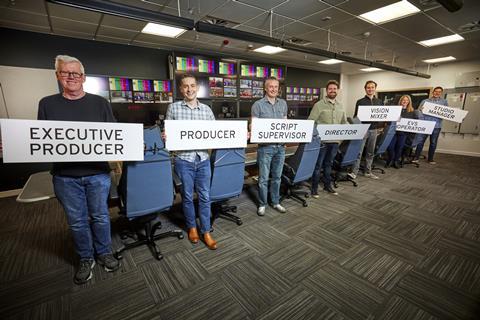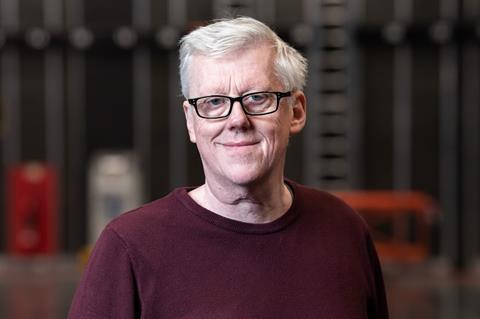dock10 studio manager David Blake explains how a TV studio gallery is set up

The production control room (PCR) is the heart of a television studio. Easily identifiable by its video monitor wall and vision mixing desk, the PCR is the place where a studio production is controlled.
The PCR houses many of the key decision makers on a production, including the producer, director, vision mixer and studio manager, who between them are responsible for successfully delivering a show to a broadcaster.
A PCR is also known as a gallery. It’s a name that derives from the early days of television production when the BBC’s first studio was based at Alexandra Palace. At that time, the PCR was situated on an ornately carved bridge that spanned the studio and was referred to as the minstrels’ gallery - and the name stuck.
To an outsider, the layout of the gallery looks complicated. Yet who sits where - or the ‘geography’ of a gallery - is relatively ordered and tends to be the same from studio to studio.
The seating is not based on seniority or any kind of hierarchy. Instead, it largely corresponds with the placing of the kit - in particular the video monitor wall (which displays the various camera sources as well as previews and graphics) and the vision mixing desk (from where the switching from camera to camera is coordinated).
Usually there are between seven and 10 people working in a PCR, and possibly more if it is a complex show.
The typical seating plan of a PCR runs as follows:
- On the far left, facing the monitors, are the executive producers and producer. They are in overall charge of the production and are ultimately responsible for the content.
- To their right is the script supervisor, also known as a PA (production assistant), who makes sure the show runs to time, oversees the consistency and continuity of the production, ‘calls the shots’ and bar counts music items.
- The director is seated in the middle of the room, from where they can easily watch the preview monitors and the output of the vision mixing desk. The director’s job is to translate the producer’s vision on to the screen, capturing the visuals and sound into one meaningful whole. Talkback microphones allow them to pass instructions and guidance to the studio crew.
- Next to the director, also in the middle of the room and with a direct view of the monitors, is the vision mixer. They run the mixing console and will cut the show as it happens, switching from one camera source to another. The vision mixer will work closely with the director, responding to their instructions to capture particular camera shots.
- Some shows will have an EVS operator in charge of delivering replays and pre-recorded items. If graphics are being used to enhance a show, a graphics operator will be seated either at the back of the gallery or to the side.
- On the far right of the PCR sits the studio manager. They act as the liaison between the gallery and the studio floor as well with a separate sound control room (from where the sound is controlled) and a lighting vision control room (from where the lights are adjusted and moved). If there are any technical problems, the studio manager will help sort it out with one of the engineers assigned to the show or knows someone who can.
dock10 has eight galleries serving 10 purpose-built studios. It’s a highly flexible set up - any one of the galleries can be used to control each of the studio floors.
Importantly, all the galleries at dock10 (and indeed most other studios) have a similar layout. The reason? So different production teams can quickly get themselves settled in any gallery - allowing them to control and deliver their show with ease every time.

David Blake is studio manager at dock10




No comments yet